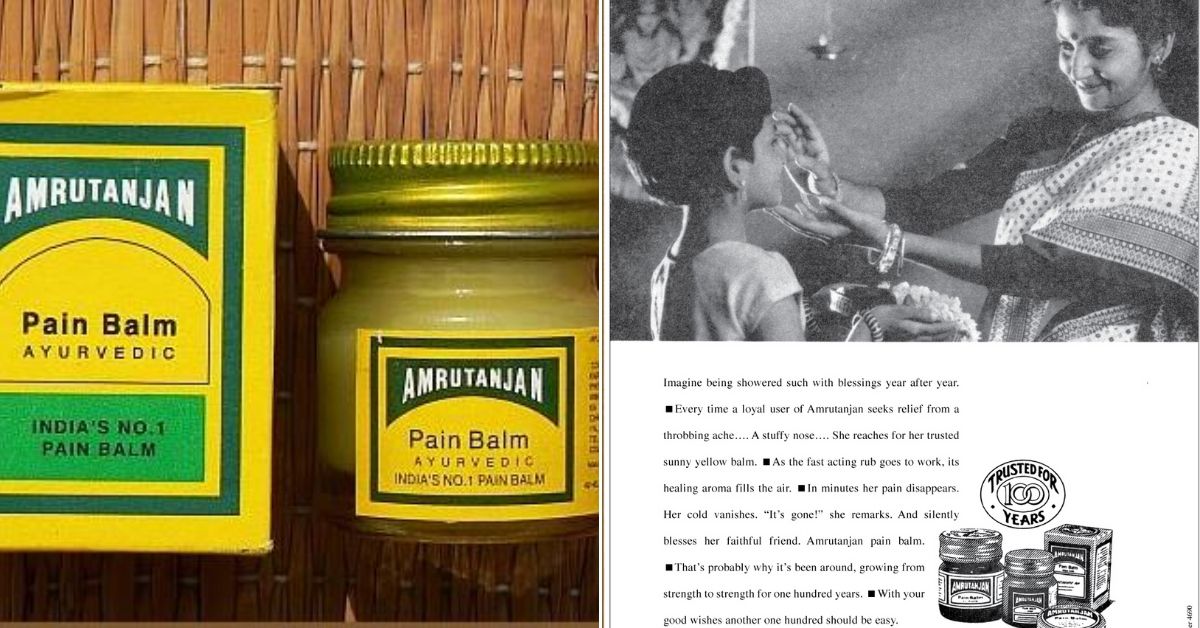How a Freedom Fighter Gave India Its Favourite Pain Balm, Amrutanjan
Bobby Fischer, the late chess legend, is believed to have asked Viswanathan Anand for Amrutanjan pain balm, complaining that he could not get it in Iceland! #IconsOfIndia

To any kid growing up in the 1980s or 1990s in India, a medicine cabinet without Amrutanjan would be almost impossible to imagine. The iconic yellow glass bottle contained a magical remedy that healed the worst headaches and body pains. I, for one, always thought that the Marathi name for pain balm was Amrutanjan because my grandmother would ask only for that whenever she suffered a headache.
Did you know that this must-have pain balm was a product designed by a freedom fighter, journalist and social reformer named Kasinadhuni Nageswara Rao?
And that, apart from bringing us this balm, the man, who was also known as Nageswara Rao Pantulu, participated in the civil disobedience movement alongside Mahatma Gandhi and played a crucial part in the formation of Andhra Pradesh?
Amrutanjan: Our favourite pain balm alchemised by a freedom fighter

Rao was born in Andhra Pradesh’s Krishna district in 1867. After completing his primary education from his hometown and graduation from the Madras Christian College, Rao moved to Calcutta (now Kolkata) to work for an apothecary business. Here, he would learn the basics of formulating medicines.
Following that, he moved to Mumbai to work for a European firm, William and Company where he quickly climbed the ladder of professional hierarchy and ended up becoming a proprietor.
However, he was itching to start something of his own. Perhaps his nationalistic beliefs played a part in that—after all, he was influenced by Kandukuri Veeresalingam Pantulu, the father of the renaissance movement in Telugu.
Taking his experience from the apothecary work in Calcutta, Rao formulated a strong-smelling, yellow analgesic balm and founded a company to manufacture it on a large scale in Mumbai in 1893.
The initial phases of every business are very tough and in order to popularise his brand, Nageswara Rao would distribute the balm free of cost at music concerts!
(As an aside, this strategy seems to be quite a hit for many of our favourite brands. Karsanbhai Patel had used the same campaign to popularise his washing powder, Nirma.)
Surely enough, Nageswara Rao’s business picked up and although the balm was priced at just ten annas in its early days, Amrutanjan made the Andhra businessman a millionaire.
The idea of Andhra Pradesh:

While the business was flourishing, Rao also used this influence and reach to carry out social reforms. He firmly believed in the need for a separate state for the Telugu people. Thus, he started organising efforts for the Telugu speaking public in Mumbai, where Amrutanjan Limited was based. Subsequently, he founded a weekly journal called Andhra Patrika there.
In five years, this journal became very popular and Rao decided to move it to Madras (Chennai) in 1936 where he could reach a larger Telugu population. The journal became a daily here, and he authored impassioned articles in favour of separating the Andhra state from the Madras Presidency.
In the following years, Rao became one of the founders of the Andhra Movement, making this demand more visible. The movement got a lot of traction from Telugu speakers and an official committee was formed to organise efforts.
From 1924 to 1934 Rao worked as the president of the Andhra State Congress Committee. His constant efforts in this movement, his involvement in the freedom struggle and his nationalistic articles earned him the name, ‘Desoddhaaraka’ or uplifter of the masses. In November 1937, it was in his home that Telugu leaders organised a meeting to chart an action plan for the Andhra state.
However, the raging world war and India’s post-independence struggles pushed the cause of the Andhra state aside for a while and it was ultimately formalised only on the 19th of December, 1952.
Unfortunately, Rao passed away on 11 April 1938, just five months after he chaired the meeting of Telugu leaders in his home, and could not see his dream materialise. However, his ideas, his publishing house (the Andhra Grandha Mala) and the libraries it created, and finally, India’s favourite pain balm, Amrutanjan, live on as his legacy.
(Edited by Gayatri Mishra)
Like this story? Or have something to share? Write to us: [email protected], or connect with us on Facebook and Twitter.
This story made me
- 97
- 121
- 89
- 167
Tell Us More
We bring stories straight from the heart of India, to inspire millions and create a wave of impact. Our positive movement is growing bigger everyday, and we would love for you to join it.
Please contribute whatever you can, every little penny helps our team in bringing you more stories that support dreams and spread hope.



















